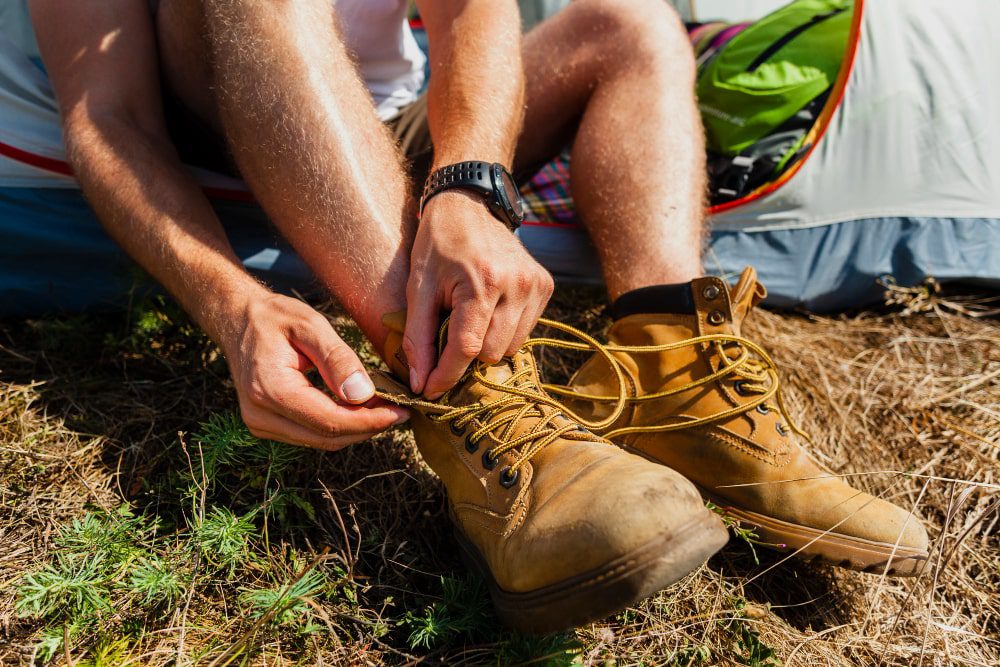Table of Contents Show
✍️ AI is summarizing:
Regarding hiking, the proper footwear can make all the difference between an enjoyable adventure and a painful ordeal. As you prepare for your next trek, you might ask yourself: Should hiking shoes be bigger than your regular sneakers? This is a common consideration among outdoor enthusiasts, and understanding the best fit for hiking boots can significantly enhance your experience on the trail.
Related post:
- Why Trail Runners Are the Ultimate Hiking Boots Alternative for Modern Adventurers
- 6 Essential Tips for Hiking with Kids for the First Time
- Hiking for Weight Loss: 10 Proven Strategies to Burn More Calories on the Trail
Why the best fit for hiking boots might be slightly bigger
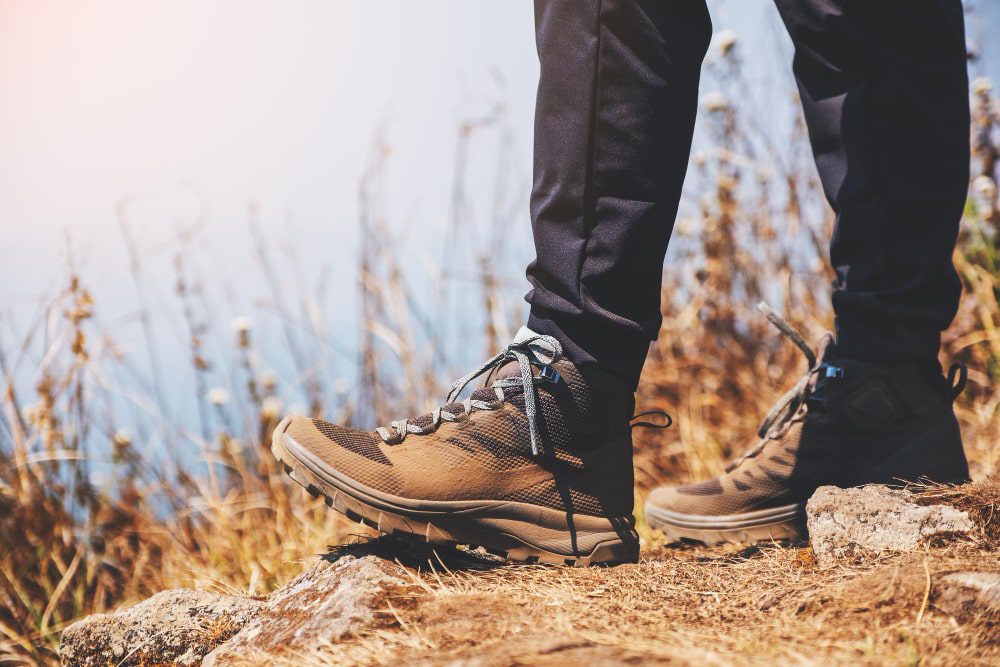
Fit is crucial when selecting hiking footwear. A snug fit enhances stability and comfort, allowing you to cover more ground without the nagging discomfort of blisters or foot fatigue. However, many hikers choose to size up, and there are several valid reasons why the best fit for hiking boots isn’t always your standard size.
1. Accommodating swelling
Foot swelling is one of the most common reasons for opting for a larger shoe size. After hours of hiking, it’s natural for your feet to swell due to increased blood flow and prolonged exertion. A slightly bigger shoe can provide the extra room to prevent pinching and discomfort as your feet expand on the trail.
2. Protecting your toes
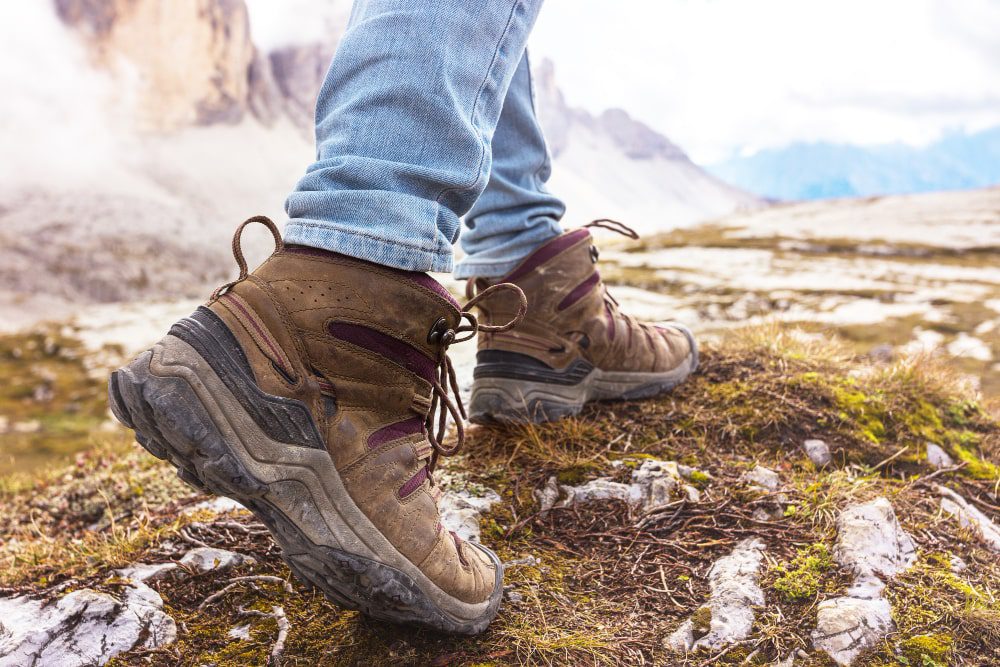
A larger shoe can offer more space in the toe box, which helps protect your toes from becoming bruised or injured, especially if you tend to stub them on rocks or roots. This added space is particularly beneficial for those who enjoy pushing their limits on challenging trails, as it reduces the risk of painful injuries. For many hikers, this extra room contributes to the best fit for hiking boots, balancing comfort, safety, and performance on rugged terrain.
3. Customizing comfort with thicker socks and insoles
Many hikers prefer orthopedic insoles for added support or wear thicker socks for extra warmth. If you fall into this category, sizing up is essential to ensure your shoes can accommodate these modifications without feeling cramped. Bringing your insoles or socks when shopping for new hiking shoes can help you find the perfect fit.
How much should you size up?
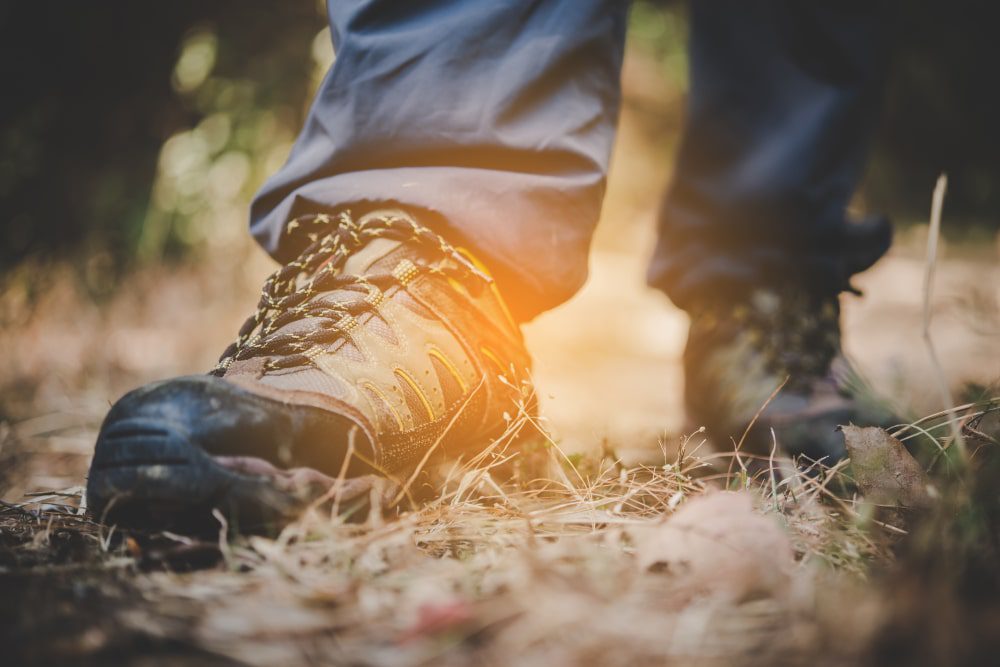
Most hikers find that going up by half a size is ideal. However, it’s crucial to avoid going too big, as a loose fit can cause your foot to slide inside the shoe, increasing the likelihood of blisters or ankle sprains. Additionally, if your shoes are too long, you might catch your toes on obstacles, leading to further discomfort. Striking the right balance is essential to achieve the best fit for hiking boots, ensuring both comfort and safety on the trail.
Tips to choose the best fit for hiking boots on your next adventure
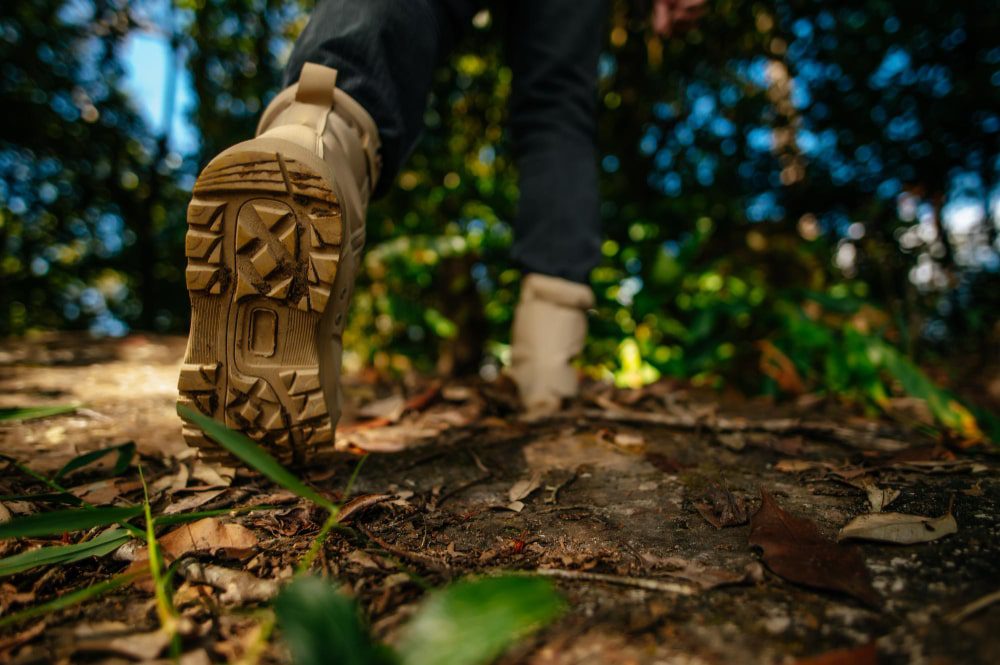
To ensure you choose the best size, consider the following tips:
- Thumb’s width rule: Place your thumb horizontally across the toe box when trying on shoes. You’re likely in good shape if you have about a thumb’s width of space between your toes and the front of the shoe. This allows enough room to wiggle your toes without feeling like you’re wearing clown shoes.
- Flexibility check: Pay attention to how the shoe flexes with your foot. It might not be the best fit for hiking boots if you notice wear on the heel or if the shoe doesn’t bend where your foot does. A well-fitting shoe should flex comfortably at the ball of your foot.
- Test the width: Try on shoes later in the day when your feet are slightly swollen. Wearing your hiking socks while trying on shoes will give you the most accurate representation of how they will feel on the trail.
Ultimately, whether you choose to size up your hiking shoes is a personal decision that depends on your unique needs and preferences. Once you’ve found the best fit for hiking boots, break them in before hitting the trails. With the perfect fit, you can focus on enjoying nature and making the most of your outdoor adventures.
Conclusion
Finding the best fit for hiking boots is less about fashion and more about function and comfort. Sizing up slightly can save your feet from blisters, smashed toes, and all the other trail woes.
Whether trekking through misty mountains or strolling through forest paths, the proper boots can elevate your experience. So be kind to your feet: choose wisely, break them in, and let the trails talk. Follow our official Facebook page now to receive more interesting information.

